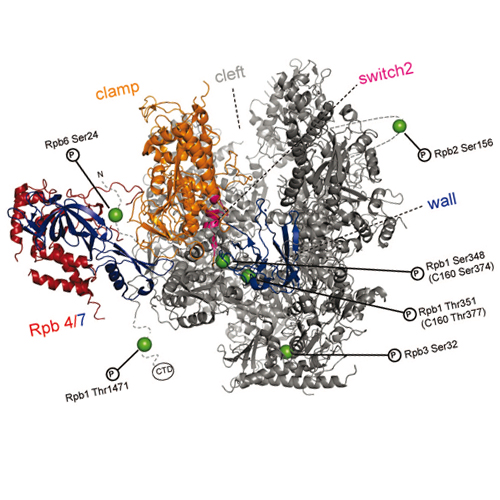Multiplexed Proteomics Mapping of Yeast RNA Polymerase II and III Allows Near-Complete Sequence Coverage and Reveals Several Novel Phosphorylation Sites
17-Apr-2008
Analytical Chemistry, 2008, DOI: 10.1021/ac7024283, pp 3584–3592 published on 17.04.2008
Analytical Chemistry, online article
Analytical Chemistry, online article
The multisubunit RNA polymerases (Pols) II and III synthesize mainly eukaryotic mRNAs and tRNAs, respectively. Pol II and Pol III are protein complexes consisting of 12 and 17 subunits. Here we analyzed both yeast Pol II and Pol III by multiplexed mass spectrometric analysis using various proteases and both collision induced and electron transfer dissociation. The cumulative data obtained from using the various proteases (trypsin, chymotrypsin, Glu-C and Lys-C) and the two peptide fragmentation approaches allowed us to map nearly the complete sequences of all constituents of both Pol II and III. Notably, chymotrypsin behaved equally well as and in certain circumstances better than trypsin in the context of protein coverage. Although the available high resolution structures have exposed extensive mechanistic insights into transcription, the role of post-translational modification in these processes has been addressed to a lesser extent. In our analysis of Pol II and III we detected 19 phosphorylation sites, of which 12 have not been previously reported. Identified phosphosites were mapped on the Pol II structure which provided indications that they might play a role in regulating the conformation of the clamp region and, as a consequence, interaction of Pol II with nucleic acids. The described multiplexed proteomics approach is generic and reveals that it is possible to map a protein complex to near completion while applying less than 5 μg (approximately 10 pmol) of total starting material.











